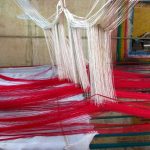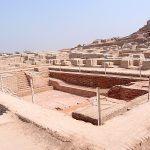- The practice of ivory carving has been prevalent in India since the Vedic period, where it was referred to as ‘danta’.
- Recent excavations have shown that during the Harappan period, ivory and objects made of ivory, like ivory dice, etc., were exported from India to Turkmenistan, Afghanistan, and parts of the Persian Gulf.
- Evidence
- An inscription from Sanchi that dates back to the 2nd century BCE mentions the guild of ivory workers from Vidisha and carved sculptures in the Sanchi Stupa.
- Remains of an ivory comb from Taxila have been found.
- The traditional centers for the carving of ivory are Delhi, Jaipur, and Murshidabad in West Bengal.
- Kerala – Well known for painting on ivory.
- Jodhpur – Bangles made of ivory.
- Jaipur – Famous for its ivory jali work
- For Example: Ambari Hathi.
Begram Ivories
|


